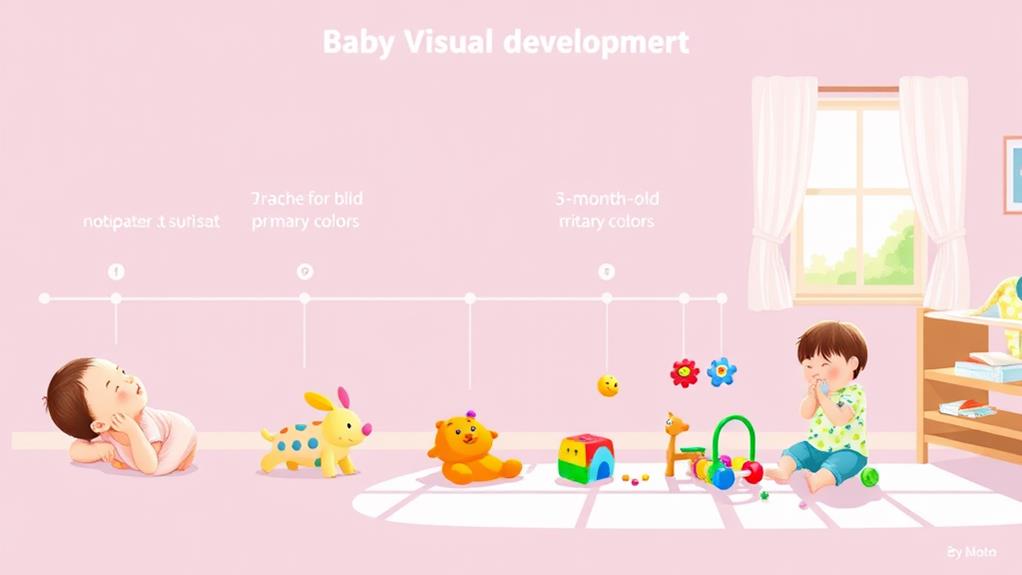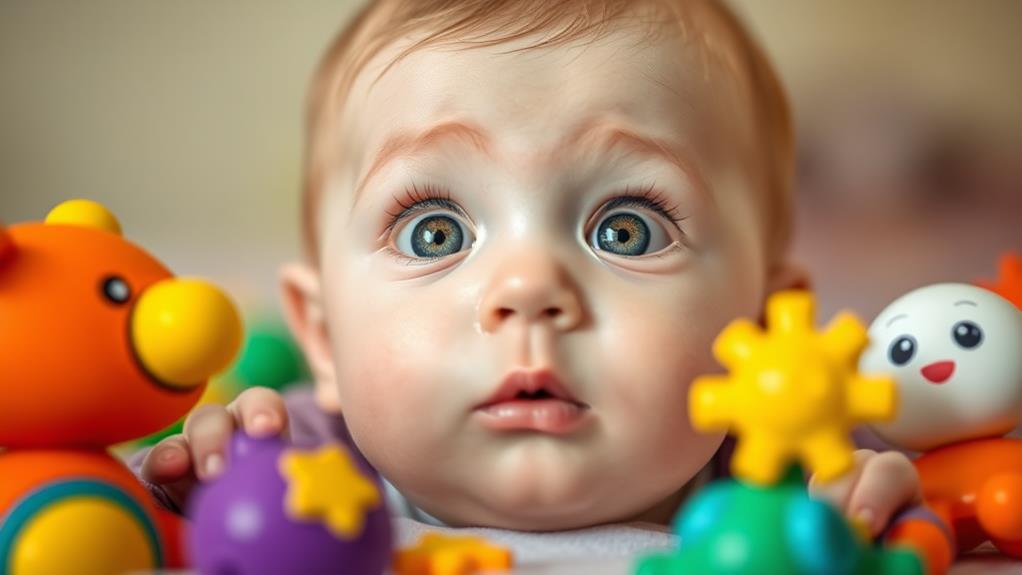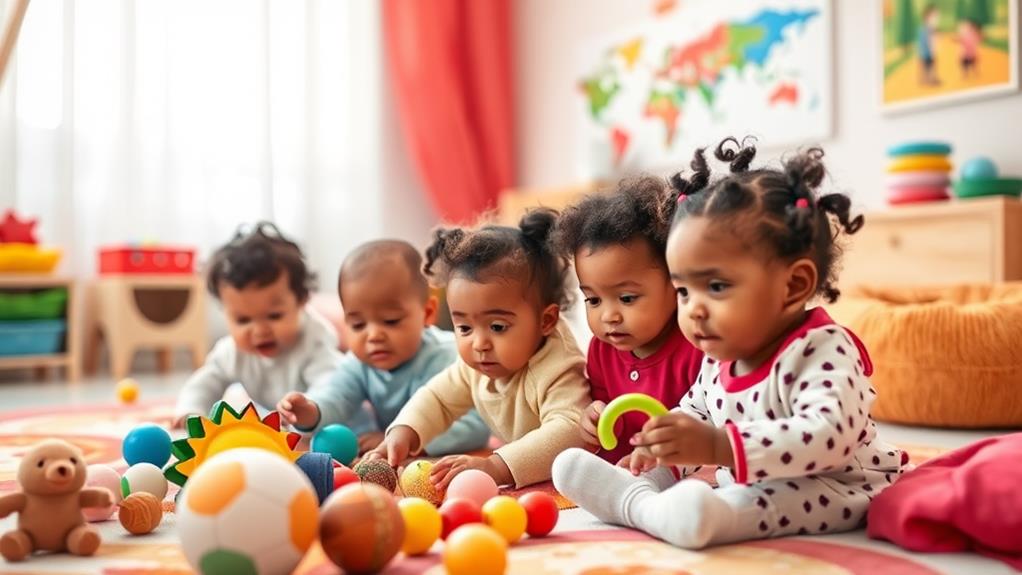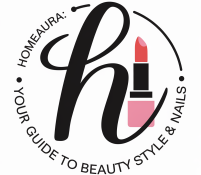You might be surprised to learn that a baby's journey into the world of color begins with a rather blurry view of their surroundings. As their vision develops, they gradually start to recognize colors, particularly around 4-6 months of age. This period not only marks an important milestone in color perception but also signals enhanced coordination and tracking abilities. Understanding these key stages can help you choose the right toys and activities to support your baby's visual growth. But what specific colors capture their attention, and how can you optimize their environment for exploration?
Early Visual Development

In the first few months of life, your baby's visual development undergoes significant changes. At first, your little one can only see blurry shapes and light. It might feel like they're playing peek-a-boo with the world!
But as weeks go by, things start to get clearer. By around two months, they'll lock their gaze on your face, which is a huge milestone. They're starting to recognize you!
From three to four months, their eyes begin to work together better. You might notice them tracking moving objects with their eyes, like that colorful mobile you hung above the crib. It's like they're practicing for the Olympics of visual skills!
Around this time, babies also start to show interest in patterns. So, those bold stripes on their clothes? They're a big hit!
Understanding Color Perception
As your baby's vision sharpens, they begin to experience the world in vibrant colors. At first, their view of the world is a bit like a black-and-white movie, but soon enough, they'll start spotting shades of red, blue, and green. Isn't that exciting?
Color perception is essential for babies as it helps them recognize and differentiate between objects. When they see bright colors, it not only captures their attention but also encourages exploration. Imagine your little one's eyes lighting up at a bright yellow toy or a deep blue blanket!
As they grow, their ability to perceive colors becomes more complex. They'll start noticing subtle differences in shades, which can even affect their preferences. Who knows? Your baby might develop a love for all things purple!
It's important to surround your baby with colorful toys and books. This will help stimulate their growing vision and curiosity.
Plus, it can lead to some fun playtime! So, keep those colors coming, and watch as your baby's world transforms into a beautiful, colorful adventure.
Key Vision Milestones

Tracking your baby's vision development is essential, as there are key milestones that signal their growth. From the moment they're born, your little one is on a fascinating journey of visual discovery.
At around 1 month, they can see shapes and light, but their focus is still a bit fuzzy—kind of like trying to watch a movie through a foggy window! By 2 to 3 months, their ability to track moving objects improves. You might notice them following your finger as you wave it around.
At 4 to 6 months, your baby starts recognizing colors, and they'll show a preference for brighter hues. It's super fun to watch them react to colorful toys!
By 7 to 9 months, they're mastering depth perception, so they'll reach for objects with more confidence.
Around their first birthday, babies are pretty skilled at seeing the world around them. They can identify familiar faces and even begin to spot the difference between objects.
Safety in Introducing Foods
Introducing new foods to your baby can be an exciting yet nerve-wracking experience. You want to make sure they're safe while exploring new flavors and textures.
First, always start with single-ingredient foods. This way, if they've an allergic reaction, you'll know exactly which food caused it. Common first foods include mashed bananas, pureed sweet potatoes, or oatmeal.
When you introduce a new food, wait three to five days before adding another one. This wait time helps you spot any allergies or sensitivities. If you notice a rash, swelling, or unusual behavior, call your pediatrician right away—better safe than sorry!
Also, remember to avoid honey until your baby is at least one year old. Honey can cause botulism in infants, which sounds scarier than it is, but it's definitely something to avoid.
Lastly, always supervise your baby during mealtime. Little ones can be curious and might try to shove too much food in their mouths at once. Keep the food sizes small and be patient!
Your baby's taste buds are just starting their adventure, so enjoy the messy moments together!
Encouraging Healthy Vision Growth

Fostering healthy vision growth in your baby is essential for their overall development. You can help your little one by providing a visually stimulating environment. Bright colors, interesting shapes, and varied patterns can catch their attention, giving their eyes something fun to focus on.
Hang colorful toys around their play area, and consider using black-and-white images to help them see contrast better.
Engaging in face-to-face interactions is another great way to support their vision. Babies love looking at your face! Smile, make silly faces, and talk to them. This not only helps them learn to recognize you but encourages them to explore their visual world.
Don't forget about outdoor time! Natural light is great for eye development, so take your baby for walks in the park. Just remember to protect their eyes from direct sunlight, as they're still sensitive.
As your baby grows, introduce books with bright illustrations and textures. Reading together can be a wonderful bonding experience while helping them develop their sight.
